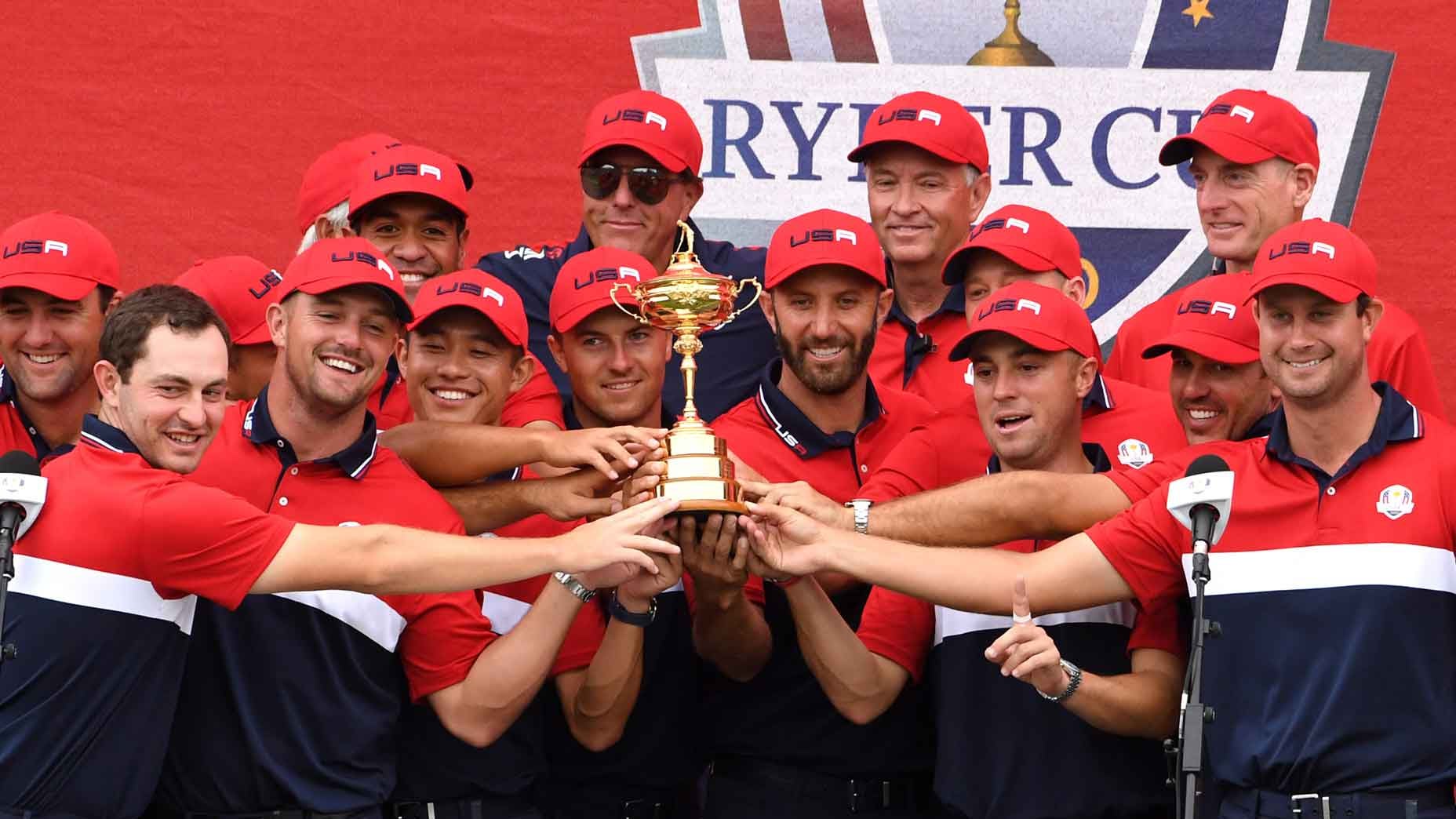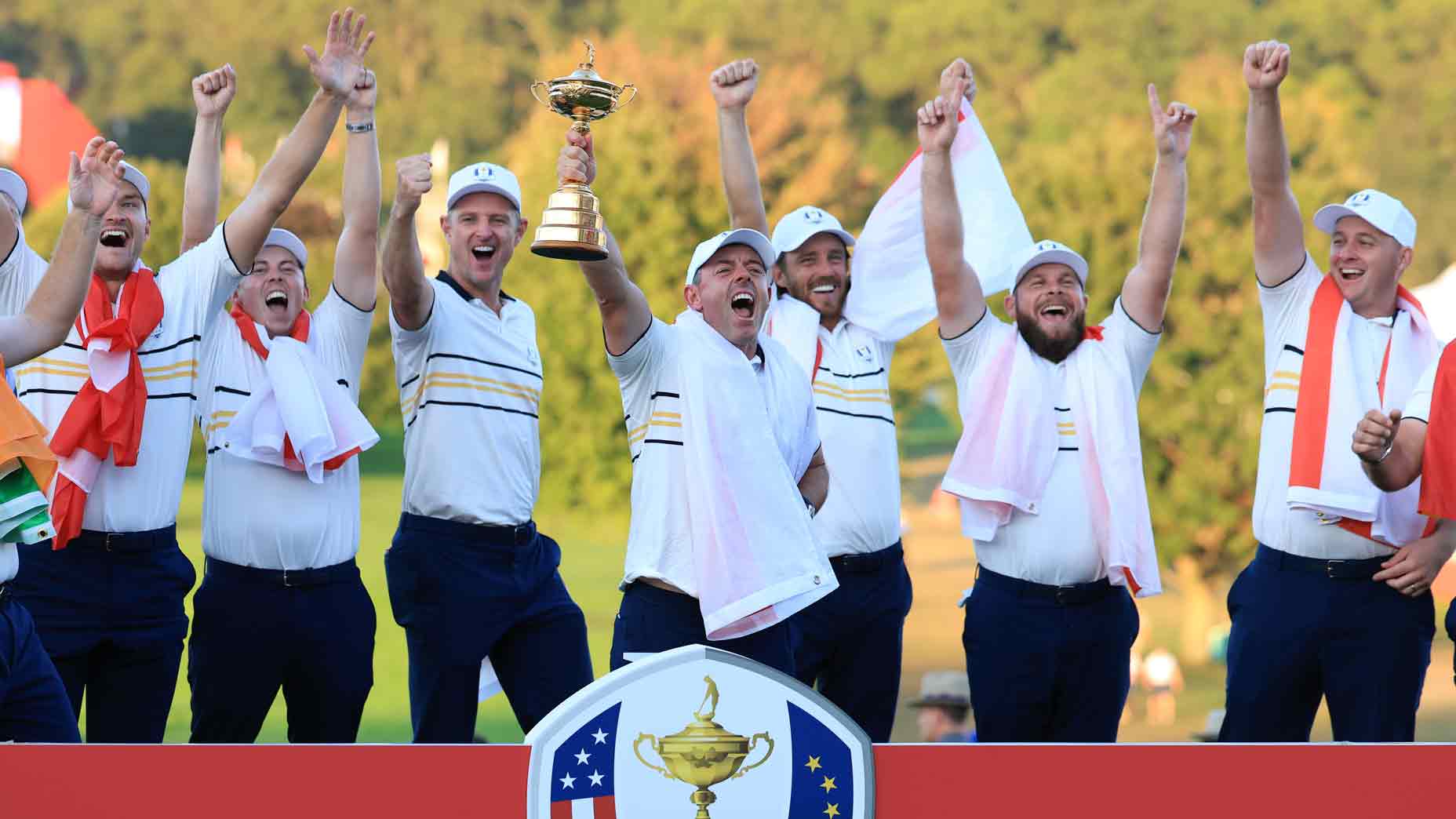Hemming and hawing about the Ryder Cup is often reserved for the weeks and months immediately preceding the event. In the instance of the 2025 Ryder Cup at Bethpage Black, however, consternation abounds a full year ahead of schedule.
The topic: ticket prices, and how they’re more expensive than ever before.
As was revealed this week, the prices for Ryder Cup tickets — which are not yet available, and are only accessible via a lottery in November — begin at $255 for early-week practice rounds and extend to a baseline of $749 for competition days.
Predictably, the response from golf fans across social media and in the press has been harsh. It’s not often we see such a unified label of sticker shock. But it’s not totally surprising. Tickets for the last two Cups — one held outside Rome and the other outside Milwaukee, Wisc. — have largely been in the $200-250 range.
Hiking prices by a factor of three? Make it make sense!
Shocking Ryder Cup ticket prices remind us of 1 uncomfortable truthBy: Sean Zak
Well, we’ve tried to do that. And we’re not positive we’ve succeeded, but we spent Tuesday afternoon chatting with the championship director of the Ryder Cup, Bryan Karns, who has worked for the PGA of America for more than a decade. He’s been based in New York for the last two years, prepping for the 2025 Cup, meeting with representatives of New York sports teams, transit systems and entertainment venues. Below are highlights of our conversation, which speak to the pricing approach the PGA of America believes in. More than anything, that last line is important. This is a number the PGA of America believes in. It’s not changing.
It’s also the price at checkout. The final price. It’s steeper than ever, but patrons won’t be paying a dollar more, and that was important to the PGA.
“We wanted to be transparent and say, instead of listing a lower price and then someone gets to the checkout and it’s 70% more, it’s $140 in taxes and fees,” Karns said. “That is the checkout price. I guess, in some way we just felt like, why would we do that?”
The $749 price point for weekend sessions will earn (and already has) the most significant reaction. Very few sporting events in the world charge that as a base price. What creates that price is a number of factors both internal and external. Let’s start with the external.
The PGA of America prices its events differently market to market. When the 2022 PGA Championship was hosted at Southern Hills, in Tulsa, Okla., part of their market research included the price of an Oklahoma City Thunder playoff ticket, or the market for a major college football game involving the Oklahoma Sooners. (That championship also was the site of major pricing outrage on beer.) Karns says the PGA spent a year working on deciding how to price an event in the vicinity of New York City, one of the most expensive and populous cities in the world. From an operating cost perspective, New York City is endlessly more expensive than the countryside of Wisconsin or suburban Minneapolis — “It costs a lot just to breathe the air,” Karns joked — but the PGA is trying to produce a price that fits in among other massive sporting events. They believe they’re a “Tier 1” event that fits alongside the World Series or NBA Finals in the greater sporting landscape.
“We knew that it was going to be critical to get this right and to try to do something that we felt was on par with where we viewed ourselves and where our position was in this world,” Karns said. “But at the same time, understanding there is some nuance to Ryder Cup tickets. It’s a full day event versus three hours. It’s without a seat, but a GA ticket allows you the chance to be on a rope line, [compared] to if I bought the standing room only at Yankee Stadium last night. So we try to factor all those in. And it’s never as simple as saying it’s apples to apples. But we took a lot of feedback and got to this point where we felt like, look, this is what we feel confident in.”
Among the things that social media responders feel most confident in is that even at an inflated price, there will be no shortage of patrons willing to pay it. Market forces are at work! this is Econ 101! That will play out over the next couple months as the PGA’s lottery system randomly selects users in November and asks them for credit card information. Most major golf tournaments do not go beyond 50,000 fans per day, but most tournaments are hosted on an annual basis. They may have reached a supply and demand equilibrium at $749, but it feels to organizers like a unique sale.
“The general price is I think just indicative of A) this market, B) where we position ourselves, where we feel like we are [in the greater sports landscape], and then the demand,” Karns said. “I think when you get into a situation where the demand is so high, you know, you want to do your best to price it so you don’t create this massively inflated secondary market.”
Karns was quick to acknowledge that secondary markets exist for all entertainment industries, and are nearly impossible to avoid. But they are, for better or worse, the strongest evidence of what people are willing to pay. The higher the inflation of a particular market, the more inspiration a governing body would have in moving their prices in that direction. That doesn’t make it right, nor does it make it fan-friendly, but it does serve as a reminder: the Ryder Cup is big business, and is being treated as such.
As for internal factors, Karns highlighted two. Firstly, the coffers of the PGA. The non-profit organization has not been shy about the fact that the Cup helps it break even on its budgeting on a four-year hosting schedule. (The same rings true for what European Cups mean financially for the DP World Tour.) In other words, the Cup makes a lot of money and helps fund the PGA of America’s mission for the next few years until the next America-based Cup takes place (in 2029, outside Minneapolis). That mission is clear: “To establish and elevate the standards of the profession and to grow interest and participation in the game of golf,” according to the PGA’s own website. The first half of that sentence pertains to the 30,000 members of the PGA — the golf professionals that give lessons, run pro shops, etc. — while the second half pertains to growing interest in the sport at large. To that end, Karns is fully aware of the narrative that expensive tickets feels counter-productive to “growing the game,” but would rather consider that price point part of the top of a funnel.
“If you look at it through the lens of, hey, I’m here to serve 30,000 PGA members across the entire United States, and the programs that they’re wanting to either grow or improve or initiate — this is the task that’s on us — is to make sure that that can happen, because that’s, in my opinion, where the growing game really happens, on the front line with the PGA members.”
The accounting of which profits from the Cup trickle down to the rest of the golf world is complex and not always so obvious, but is entirely up to the PGA. (The golfers competing in the event, notably, do not get paid an appearance fee. They receive $200,000 donations to a charity of their choice.)
The second internal reasoning for a price hike is that the PGA essentially hopes to run the best and biggest event it ever has. That would be an event free of snags, from the transportation out to Farmingdale, N.Y., where patrons park and get on shuttle busses — most of which will take place in the early morning — to the number of bathrooms on site. In other words, as many bathrooms as it takes so lines don’t exist. And a concessions system that runs similarly.
Karns highlighted the 2018 PGA Championship at Bellerive as a high-water mark when it comes to congestion on the course and around bathrooms and concessions. In response, the PGA has been charging a higher price for tickets to its biggest championships since 2022, inclusive of food and non-alcoholic beverages — just like the upcoming Cup — so spectators can scoop it quickly and get back to the golf. The result, Karns says, is that concession lines have effectively been eliminated.
“They’re not feeling like they they need to load up,” he says. “They grab what they need and we try to get people back to viewing golf.”
Some event enhancements will be noticeable — Karns teased the idea that the Cup is looking to create a fan activation in New York City, something they’ve never done before — and others like infrastructure will blend in to the background. They may not even feel like enhancements at all, but Karns believes it will ultimately make for an event that lives up to what people have paid for.
“We want to make sure when people buy a ticket to the Ryder Cup, they know we’re going to be able to deliver a one-of-a-kind experience,” Karns said. “I mean, it’s sort of like the Disney model in a way, in that you’re going to walk out of here saying, ‘Yeah, that was worth it.’”
In the end, will it be? The evidence is still 11 months away.











